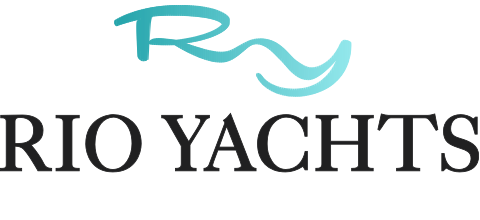Content

Sign up for Shopify’s free trial to access all of the tools and services you need to start, run, and grow your business. In the meantime, start building your store with a free 3-day trial of Shopify. Try Shopify for free, and explore all the tools and services you need to start, run, and grow your business. In our illustrative example, we’ll assume we have a company with $250 million in revenue in Year 0.
AR automation can help you manage the entire AR process seamlessly, making it less likely that you’ll end up with a credit balance in AR. You can learn more about the benefits of and process for automating your AR function in ourCFO’s Guide to Accelerating Collections. We provide third-party links as a convenience and for informational purposes only. Intuit does not endorse or approve these products and services, or the opinions of these corporations or organizations or individuals. Intuit accepts no responsibility for the accuracy, legality, or content on these sites. With invoicing software, the payment is automatically matched with the invoice and the reports are updated.
What’s the difference between accounts receivable and accounts payable?
Getting payment faster accelerates cash flow, which provides your business more available resources to operate and grow within a given timeframe. The nature of a company’s AR procedures and technology can influence the AR process. Standardization via tools such as collections email templates can reduce errors, increase customer satisfaction, and improve cost-effectiveness. Automation can further improve the above, as well as help boost revenue, increase cash flow visibility, speed up collections, and deliver superior customer experiences.
- Other receivables consist of various assets the company is owed, such as interest, salary advances, and tax refunds.
- Sending email reminders at regular intervals—say, after 15, 30, 45, and 60 days—can also help jog your customers’ memory.
- You may already have an idea of what they are, but just allow me to take a few minutes and teach you exactly what they are, how they come about and how they are recorded in the accounting records of a company.
- A business is optimizing its use of accounts receivable when selling one additional dollar of goods or services on credit will not longer generate any additional profit.
- Accounts receivable are a current asset, so it measures a company’s liquidity or ability to cover short-term obligations without additional cash flows.
An invoice that states specific payment terms such as ‘net 60 days’ is an indication that a sale was made from an account rather than with cash. The term ‘net 60 days’ means that the total invoice amount due is to be paid back at the end of the 60 day period. For comparison, in the fourth quarter of 2021 Apple Inc. had a turnover ratio of 13.2. But if some of them pay late or not at all, they might be hurting your business. Late payments from customers are one of the top reasons why companies get into cash flow or liquidity problems.
Popular terms
That physician may also invoice the customer for any remaining balance the insurance did not cover. The physician’s office would then record both balances owed in its accounts receivable until it receives payment. From their end, the insurance company responsible for a portion of the client’s payment will document the balance it owes to the physician as accounts payable.
- Without it, your balance sheet can’t provide an accurate picture of your liquidity.
- Because they represent funds owed to the company, they are booked as an asset.
- Starting from Year 0, the accounts receivable balance expands from $50 million to $94 million in Year 5, as captured in our roll-forward.
- Non-trade receivables are another category of asset that represents money that hasn’t yet been paid to a business but will be soon.
- A typical aging schedule will group outstanding invoices based on 0 to 30 days, 30 to 60 days, etc.
- To give an example of trade receivables, a company might invoice its customer $475 for the sale of materials.
A skilled AP team keeps supplier relationships positive by making sure vendor information is accurate and up-to-date and bills are paid on time. The team can save the company money by taking full advantage of favorable payment terms and available discounts. A strong AP practice https://www.bookstime.com/ contributes to business success by ensuring cash forecasts stay accurate, minimizing mistakes and fraud and generating reports for business leaders and third parties. The factor pays the original company for its AR and then collects the money due from customers.
AR Process
When a client doesn’t pay and we can’t collect their receivables, we call that a bad debt. When Keith gets your invoice, he’ll record it as an accounts payable in his general ledger, because it’s money he has to pay someone else. Here we’ll go over how accounts receivable works, how it’s different from accounts payable, and how properly managing your accounts receivable can get you paid faster.
What does it mean to be an account receivable?
Accounts receivable (AR) is an item in the general ledger (GL) that shows money owed to a business by customers who have purchased goods or services on credit. AR is the opposite of accounts payable, which are the bills a company needs to pay for the goods and services it buys from a vendor.
When an AR is recorded in the accounting records, it is recorded as a debit to the accounts receivable account and a credit to a revenue account. Revenue is the amount of money that is received or will be received from a what does accounts receivable mean sale. With each new AR transaction that occurs, the steps in the recording process are repeated. Every single transaction that occurs in a company has at least one account that is credited and one account that is debited.
Lenders and potential investors look at AP and AR to gauge a company’s financial health. Income is important, and so is prudent spending to grow the business and retain customers. Mismanagement of either side of the equation can adversely affect your credit and, eventually, the stability of your business.
Is accounts receivable a hard job?
Is accounts receivable a hard job? Accounts receivable can be challenging at times because it requires a great deal of accuracy, organization, and attention to detail. However, with proper training and experience, it can become easier over time.
After you’ve completed an order for one of your customers, you send them an invoice detailing the cost of the shoes and any applicable taxes or shipping fees. However, if your customer doesn’t pay this invoice in full within 30 days, it becomes an Accounts Receivable for your business. Many businesses today accept credit card payments as a form of payment from their customers.
Accounts receivable is the dollar amount of credit sales that are not collected in cash. When you sell on credit, you give the customer an invoice and don’t collect cash at the point of sale. Accounts payable are recorded in a similar manner, but in the reverse roles – your company purchases goods or services on credit and increases the ‘accounts payable’. If the costs of collecting the debt start approaching the total value of the debt itself, it might be time to start thinking about writing the debt off as bad debt—that is, debt that is no longer of value to you. Bad debt can also result from a customer going bankrupt and being financially incapable of paying back their debts.
If you can’t generate enough current assets, you may need to borrow money to fund your business operations. The cash is received in April, but the revenue is correctly recorded in March. Using accounts receivable posts the revenue in the month earned, and your accounting records are consistent with the accrual basis.
With the cash-basis accounting method, a company records expenses when it actually pays suppliers. StyleVision would record the $500 down-payment on the frames when it places and pays for the order, and then post the $500 balance when it receives the frames and issues that final payment. The AR process starts when a company sells a good or service and includes payment terms, discounts or credit guidelines in an invoice to the customer.
- An example of a common payment term is Net 30 days, which means that payment is due at the end of 30 days from the date of invoice.
- A seller may find that its customers cannot pay their receivable balances when due, in which case an option is to convert these receivables into notes receivable.
- For comparison, in the fourth quarter of 2021 Apple Inc. had a turnover ratio of 13.2.
- If you enforce a policy, people will either start to pay you on time, or stop doing business with you (which may be fine, if they always pay late).
- A strong AP practice contributes to business success by ensuring cash forecasts stay accurate, minimizing mistakes and fraud and generating reports for business leaders and third parties.
- In our illustrative example, we’ll assume we have a company with $250 million in revenue in Year 0.

